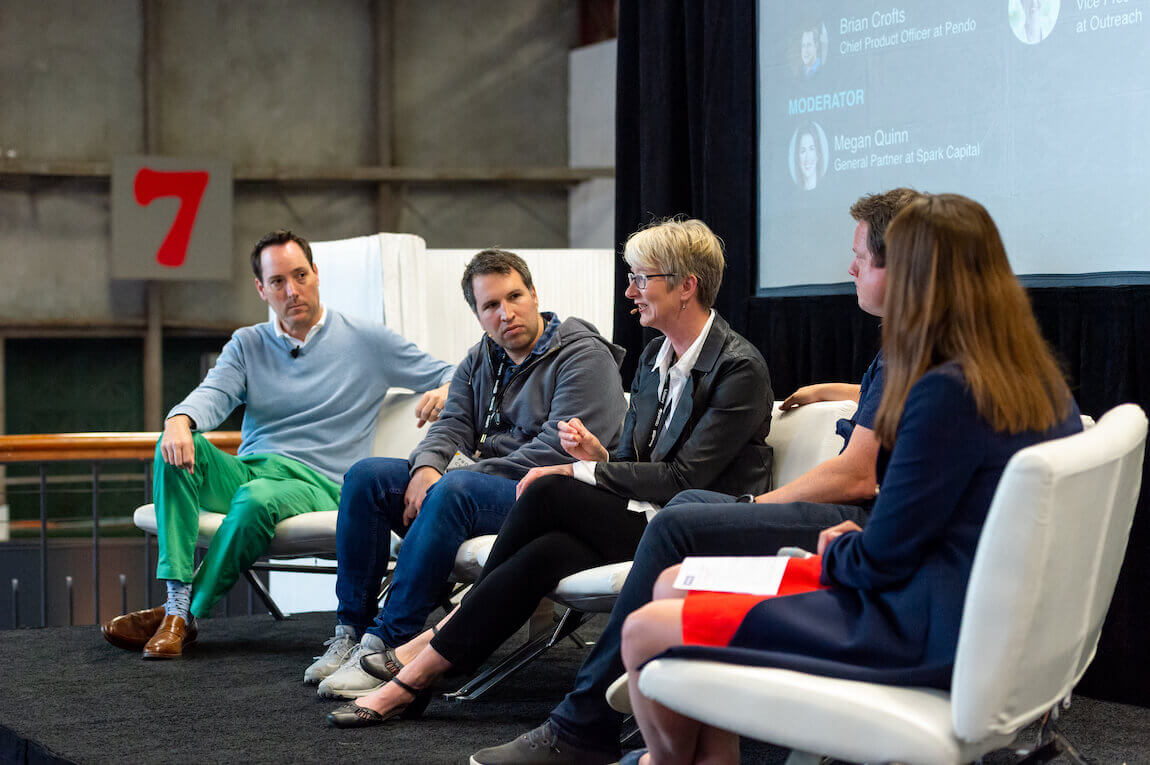What does it mean to be a product manager? It’s a question explored in an animated panel discussion at the inaugural ProductCraft conference in San Francisco a few weeks ago. Moderated by Megan Quinn, Spark Capital VC and a former Google PM and head of product at Square, the panel included:
- Steve Sloan, Chief Product and Marketing Officer at Twilio
- Tido Carriero, Chief Product Officer at Segment
- Sarah Phillips, Vice President of Product at Outreach
- Brian Crofts, Chief Product Officer at Pendo
What Does PM Mean to You?
Megan led off with a somewhat existential question: What’s your definition of product management? She contextualized the question with her assertion that other functions don’t suffer from the same confusion in scope and purpose. Engineers, for example, produce code, a tangible output. What exactly does a PM produce?
Steve Sloan offered a tidy role definition in list form. He said that product managers are responsible for four specific things:
- Discovering customer problems;
- Prioritizing roadmaps — importantly, using a clear, transparent system that reveals how you make decisions;
- Doing whatever it takes to get the product built; and,
- Doing it all in a way that makes sure the product remains lovable.
This last part reveals a subtle, but utterly crucial aspect of the product management role that Brian Crofts picked up on with his own definition.

Crofts answered by way of analogy, sharing how he’s explained his own career choice to an inquisitive mother. “Think of me as the editor-in-chief for a newspaper,” he said. “My role is to decide what shows up in the pages by consolidating the attractive many to the critical few.”
The implication is that it’s much easier to add than edit. As Sarah Phillips put it, product management is the art of delivering a solution that someone needs and values. But, crucially, more doesn’t always mean more. Just the contrary. The role of the editor — and, by extension, the product manager — is cutting, pruning, and reducing so what you deliver is relevant, valuable, coherent, and consumable. At heart, product management is really an editing job: It’s about cutting through noise, finding threads, and ensuring that each new capability creates meaning, value, and delight for end users.
How Do PMs Lead?
Exactly how you do this — particularly in the face of passionate voices and insistent demands — takes precision, patience, and a deft hand. The best PMs lead with influence, not formal authority. Megan asked the panel their thoughts on this classic dichotomy. Tido Carriero said that the best product managers fade into the background, suggesting that they strongly influence decisions but never wield a bat.
That’s not to say they’re pushovers: they simply don’t make it about their own points of view. Instead, they share a clear vision and a methodology for decision-making so everyone can see why certain choices are made. Thoughtful editing means that a lot will fall to the ground. The art of product management, according to Steve Sloan, is never seeking to please everyone. But perhaps the science is teaching them why.
The Art and Science of Influence
Sarah Phillips said that the way to align a team around a product strategy is to demonstrate how it supports the north star goal of the company. With that, she said, everyone knows where you’re going and why.
Steve Sloan said to come armed with data, both quantitative and qualitative, to illustrate what’s driving decisions and how those bets are paying off. Collect data based on user behavior, gather and synthesize customer feedback — and, crucially, talk to your customers directly. But don’t ask them lazy questions like “what do you want,” he said. Instead, ask deeper, probing questions that get to a pain or need. Ask better, fewer questions.
Brian Crofts said to bring these customer stories to the broader team. “That takes the burden off the product manager,” he said. “That’s how you wield influence.” Better yet, he suggested, don’t tell the story yourself. Get your customers on video.
How to Hire Great PMs
Great product managers aren’t always easy to spot out in the wild, which means that the interview is often where you’re best equipped to separate good from great. But not unlike with customer interviews, revealing important truths about a candidate starts with the type of questions you ask. Megan asked the panel to share their favorites:
Brian Crofts: How do you measure your life? This philosophical question reveals what makes a candidate tick. Their values, their passions, who they are as humans.
Tido Carriero: What (third-party) products do you love and why? He’s looking for deeper insights into what makes products great from an (unbiased) end-user perspective.
Sarah Phillips: Anything that reveals curiosity. What are they passionate about? What’s their breadth, range, interest, and inclination to learn?
Steve Sloan: Pretend you’re the PM for spoiled milk. It’s an impossible challenge, of course, but it helps reveal how they frame and think. See if they run directly to the solution without thinking through the problem.


